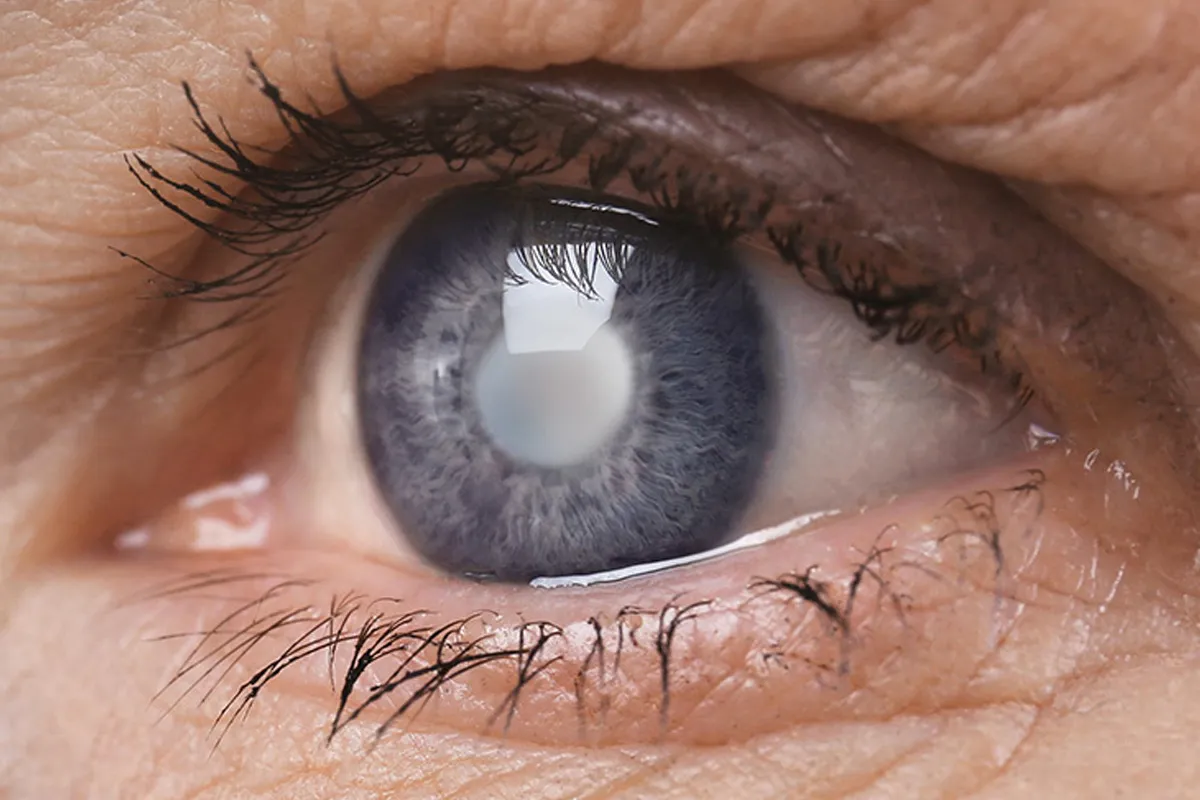January is designated as Glaucoma Awareness Month, a time to educate people worldwide about the importance of early detection, prevention, and the management of glaucoma. Glaucoma, often referred to as the “silent thief of sight,” is a group of eye conditions that cause progressive damage to the optic nerve, which can eventually lead to blindness. Unfortunately, glaucoma has no early warning signs and can develop slowly, without noticeable symptoms, until significant damage has already occurred. Early detection is the key to preventing permanent vision loss, and glaucoma awareness campaigns play a vital role in promoting regular eye check-ups.
What is Glaucoma and Why is it Called the “Silent Thief of Sight”?
Glaucoma is a progressive eye disease that results in damage to the optic nerve, often due to high intraocular pressure. The optic nerve is responsible for transmitting visual information from the eye to the brain, and when it becomes damaged, permanent vision loss occurs. The term “silent thief of sight” aptly describes glaucoma because it typically progresses without causing pain or discomfort, leaving individuals unaware of the damage happening to their vision.
The gradual onset of glaucoma is particularly concerning, as people can lose significant amounts of vision before realizing there is a problem. If left untreated, glaucoma can cause irreversible blindness. According to the World Health Organization (WHO), glaucoma is the second leading cause of blindness globally, with an estimated 60 million people affected.
The Different Types of Glaucoma
Glaucoma can be classified into several types, each with distinct causes and progression. The two most common types of glaucoma are Open-Angle Glaucoma and Angle-Closure Glaucoma. These types differ in the anatomy of the eye and how the drainage of fluid is impaired.
- Open-Angle Glaucoma: This is the most common form of glaucoma, accounting for about 70-90% of cases. It occurs when the drainage canals in the eye become clogged over time, leading to a gradual increase in intraocular pressure. The increased pressure damages the optic nerve, causing vision loss. Open-angle glaucoma often develops slowly and painlessly, which is why it is difficult to detect in its early stages.
- Angle-Closure Glaucoma: This form of glaucoma is less common but more severe. It occurs when the iris (the colored part of the eye) is too close to the drainage angle, blocking the fluid from draining properly. This leads to a rapid rise in intraocular pressure, which can cause sudden and severe symptoms such as intense eye pain, nausea, vomiting, and blurred vision. Angle-closure glaucoma is considered a medical emergency, and immediate treatment is necessary to prevent permanent vision loss.
Other types of glaucoma include:
- Steroid-Induced Glaucoma: Caused by prolonged use of corticosteroid medications.
- Traumatic Glaucoma: Occurs as a result of injury to the eye.
- Pseudoexfoliative Glaucoma: A condition in which flakes of material build up in the eye, leading to increased intraocular pressure.
- Childhood and Juvenile Glaucomas: These types of glaucoma affect children and young adults and are often genetic in nature.
Who is at Risk for Glaucoma?
Certain individuals are at a higher risk for developing glaucoma. The primary risk factor is genetics. If someone has a family history of glaucoma, their chances of developing the disease are significantly increased. The risk of glaucoma increases with age, and people over the age of 40 are advised to undergo regular eye exams. Other risk factors include:
- Ethnicity: People of African, Hispanic, or Asian descent are more likely to develop glaucoma.
- Eye Injury: Individuals who have experienced trauma to the eye may be more susceptible to glaucoma.
- High Blood Pressure: Hypertension has been linked to an increased risk of glaucoma.
- Diabetes: People with diabetes are at a higher risk for developing glaucoma, particularly if the diabetes is poorly controlled.
The Importance of Early Detection
Since glaucoma often develops with no symptoms in its early stages, it is crucial to undergo regular eye exams to detect the disease before significant damage occurs. Early detection is the most effective way to prevent permanent vision loss from glaucoma. One of the most important tools for detecting glaucoma is measuring intraocular pressure (IOP). Increased IOP is the most common cause of glaucoma and is a key indicator of the disease.
Comprehensive eye exams by an ophthalmologist should include:
- Intraocular Pressure Measurement: The most common and effective method for diagnosing glaucoma is measuring the pressure inside the eye using a tonometer.
- Optic Nerve Head Evaluation: The optic nerve is the part of the eye that transmits visual information to the brain. A detailed examination of the optic nerve can reveal signs of damage caused by glaucoma.
- Visual Field Test: This test measures the peripheral vision of the eye, which is typically the first area affected by glaucoma.
- Optic Nerve Imaging: Advances in imaging technologies, such as Optical Coherence Tomography (OCT), have made it possible to detect glaucoma even before it causes significant vision loss.
It is recommended that individuals over the age of 40 undergo eye exams every two years, particularly those with a family history of glaucoma or other risk factors. Regular eye exams are the most effective way to detect glaucoma early and prevent vision loss.
Treatment Options for Glaucoma
While there is no cure for glaucoma, it can be managed effectively with early intervention. The primary goal of glaucoma treatment is to lower intraocular pressure (IOP) to prevent further damage to the optic nerve. The main treatment options for glaucoma include:
- Medications: Prescription eye drops are the most common treatment for controlling IOP. These medications help to reduce the production of fluid in the eye or increase its drainage, thereby lowering IOP. Patients with glaucoma often need to use eye drops for life to manage their condition effectively.
- Laser Therapy: In some cases, laser surgery may be used to improve the drainage of fluid from the eye and reduce IOP. Laser trabeculoplasty and laser iridotomy are two common types of laser treatments for glaucoma.
- Surgery: For individuals who do not respond to medication or laser treatments, surgical options may be considered. Trabeculectomy and tube shunt surgery are two common surgical procedures used to create a new drainage pathway for fluid.
- Lifestyle Modifications: Certain lifestyle changes, such as maintaining a healthy diet, exercising regularly, and managing stress, can help reduce the progression of glaucoma. A balanced diet rich in antioxidants, vitamins, and minerals supports eye health, while regular aerobic exercise increases blood flow to the optic nerve.
The Role of Glaucoma Awareness Campaigns
Public awareness campaigns, such as Glaucoma Awareness Month, play a critical role in reducing the global burden of this disease. By educating the public about the importance of early detection, regular eye exams, and the risks of untreated glaucoma, these campaigns can help save the vision of millions of people worldwide.
The message of Glaucoma Awareness Month is clear: Glaucoma can steal your sight without warning, but early detection can prevent irreversible damage. By spreading awareness about the disease and encouraging people to get regular eye exams, we can help reduce the incidence of glaucoma-related blindness.
The Future of Glaucoma Treatment
While there is no cure for glaucoma, advances in medical research continue to offer hope for improved treatments. New medications, laser technologies, and surgical techniques are being developed to provide better management of the disease. In addition, there is ongoing research into gene therapy and stem cell treatments, which may one day offer more effective solutions for those with glaucoma.
However, despite these promising developments, the most effective way to protect your vision remains early detection and ongoing management through regular eye exams. By getting screened regularly and following prescribed treatments, individuals with glaucoma can lead full, active lives without losing their vision.
Glaucoma Awareness Month serves as an important reminder to take care of our eye health and to prioritize regular eye exams. Glaucoma may be a silent thief of sight, but with early detection and proper treatment, it doesn’t have to be a thief of your vision. By staying informed, getting regular eye check-ups, and adopting a healthy lifestyle, you can protect your eyes and preserve your sight for years to come.























